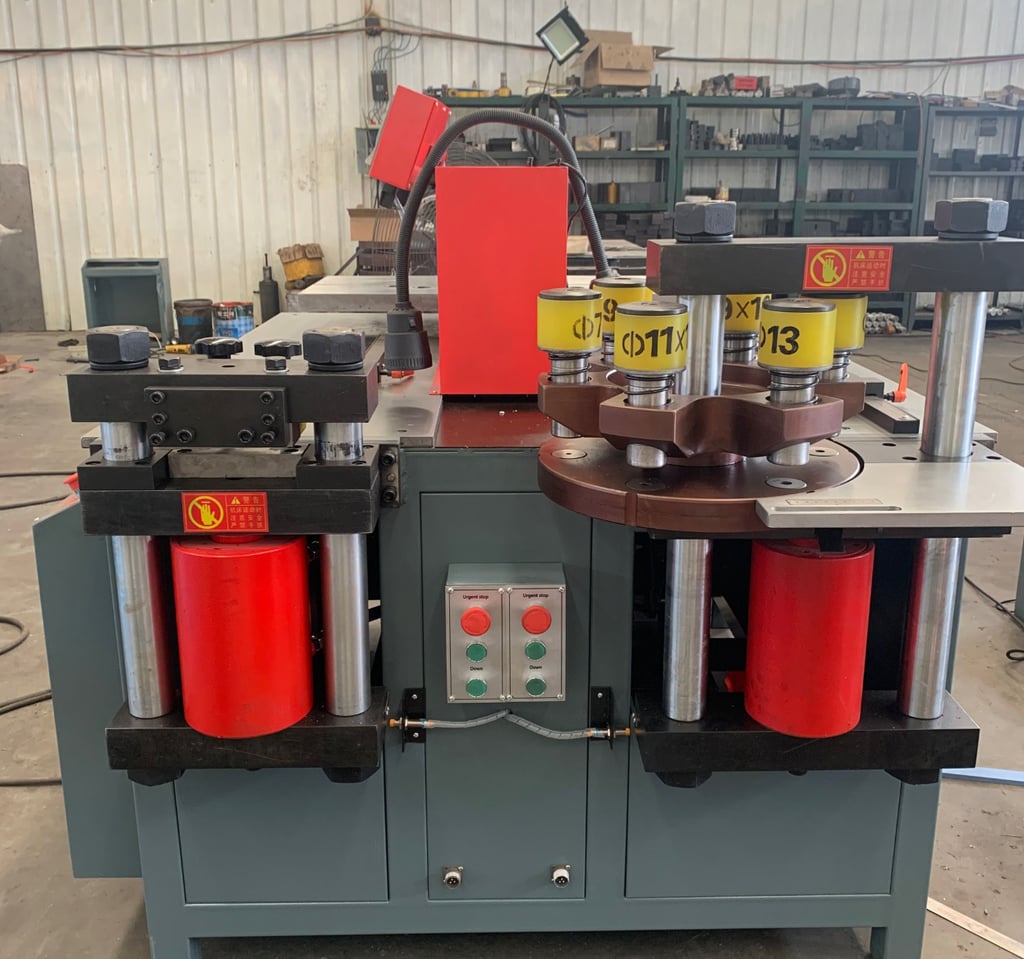2025 Southeast Asia Manufacturing Upgrade: Why Vietnam/Indonesia Small Factories are Starting to Eliminate 'Single Function' Busbar Machining Machines?
7/10/20255 min read


Overview of Busbar Machining in Southeast Asia
Busbar machining plays a critical role in the electrical and electronics sectors of Southeast Asia, particularly within Vietnam and Indonesia. As a vital component in electrical distribution systems, busbars facilitate the conduction of electricity, thereby making them essential in various applications, from substations to industrial plants. Given the rapid urbanization and technological advancements in this region, the demand for efficient and reliable busbar manufacturing continues to escalate.
Small factories have emerged as key players in the busbar machining landscape, primarily due to their agility and ability to adapt to client needs. These manufacturing units contribute significantly to the supply chain, offering customized solutions and catering to niche markets that require specialized busbar components. The significance of small factories in solidifying the position of Southeast Asia as a manufacturing hub cannot be understated. They enhance local economies by creating jobs and stimulating growth within the electrical and electronics sectors.
Historically, the machining processes employed in these small factories relied heavily on 'single function' busbar machining machines. These machines, designed to perform only one specific operation, have facilitated basic machining tasks effectively for many years. However, this reliance on single-function tools has limited productivity and flexibility in response to an evolving market. The manufacturing landscape is experiencing a shift, as businesses look to improve efficiency through the adoption of multi-functional machines that can perform a variety of tasks.
As the industry moves toward modernization, small factories in Vietnam and Indonesia are beginning to rethink their equipment strategies. This transition is driven by the need to optimize processes and respond more efficiently to customer demands, paving the way for an overall upgrade in the Southeast Asian manufacturing sector. In this context, understanding the historical use of single-function machines lays the groundwork for exploring the innovative solutions currently being implemented.
Emerging Trends in Manufacturing Automation
The manufacturing sector in Southeast Asia, particularly in countries like Vietnam and Indonesia, has been undergoing significant transformations driven by automation and smart technologies. As factories seek to improve productivity and reduce operational costs, there is a growing emphasis on leveraging advanced manufacturing solutions that not only streamline processes but also adapt to changing market demands. This shift is prominently reflected in the movement away from single-function busbar machining machines towards more versatile, multifunctional equipment.
Automation has allowed small factories to integrate new technologies, enabling them to optimize production capabilities and enhance flexibility. The emergence of Industry 4.0 signifies a crucial shift in manufacturing, where the Internet of Things (IoT), artificial intelligence (AI), and data analytics are becoming increasingly prevalent. Small factories are capitalizing on these technologies to monitor their operations in real-time, analyze performance metrics, and make data-driven decisions that bolster efficiency.
Furthermore, the push towards sustainability and resource conservation is compelling many manufacturing units to rethink their operational strategies. By adopting automated solutions, these factories can minimize waste, reduce energy consumption, and improve overall environmental impact, aligning with global sustainability goals. The transition to multi-functional machining centers allows for greater versatility in production, enabling these facilities to produce a wider array of products with less equipment and less time required for setup and changeovers.
In summary, the adoption of automation and smart technologies is reshaping the manufacturing landscape in Vietnam and Indonesia. Small factories are increasingly recognizing the advantages of investing in multifunctional machinery as they strive for improved efficiency, greater production flexibility, and sustainable practices. This emerging trend is not only enhancing competitiveness in the region but also positioning these factories as key players in the future of manufacturing excellence.
Benefits of Eliminating Single Function Machines
As small factories in Vietnam and Indonesia move towards the elimination of 'single function' busbar machining machines, they are reaping numerous advantages that significantly enhance their competitive edge in the manufacturing landscape. One of the primary benefits is the increase in operational efficiency. By transitioning to multi-functional machines, factories can streamline their production processes. These advanced machines are capable of performing multiple operations in one setup, which drastically reduces the time and effort required for setup and changeovers.
Cost savings represent another critical advantage. Single function machines often entail higher operational costs due to their specialized nature. They require more maintenance, which amplifies overhead expenses. Furthermore, when a machine is designed for only one process, any downtime directly translates into lost production. Conversely, multi-functional machines reduce these costs by enabling manufacturers to optimize their maintenance schedules and minimize the number of machines needed in the facility. Consequently, factories can maintain their equipment more effectively, extending their lifespan and further driving down costs.
Additionally, the switch to versatile machining solutions enhances product quality. These modern machines incorporate advanced technologies that can produce higher precision components with better surface finishes. This increased capability not only results in improved end products but also enhances the factories' reputation in the market, attracting more clients and contracts. Beyond product quality, small factories gain the flexibility to respond swiftly to changing market demands, which is paramount in today's dynamic landscape. Case studies demonstrate that factories that have adopted this approach can adapt their production lines in response to new trends or customer preferences rapidly.
Incorporating these multi-functional machines presents a robust opportunity for small manufacturing facilities, emphasizing cost savings, efficiency, quality improvement, and adaptability.
Challenges and Future Outlook
The transition from 'single function' busbar machining machines to more advanced technologies presents several challenges for small factories in Vietnam and Indonesia. One of the primary obstacles is the initial investment cost associated with acquiring multifunctional machinery. These advanced machines not only require a higher capital expenditure but also necessitate ongoing maintenance and operational expenses that can be daunting for smaller enterprises. Small factories may find it difficult to allocate budgets for such investments, especially when competing against larger manufacturers with more substantial financial resources.
Another significant challenge is the need for skilled labor. As operations become more technologically sophisticated, the demand for skilled workers who can operate and maintain advanced machinery increases. Small factories may face difficulties in sourcing adequately trained personnel, leading to potential bottlenecks in production processes. Moreover, existing employees may need substantial retraining to adapt to new systems and workflows. The investment in labor training programs adds another layer of complexity and financial commitment.
In addition to these challenges, the transition period itself can lead to disruptions in production. Factories undergoing upgrades may experience downtimes while integrating new technologies. This interruption can affect supply chains and timelines, posing risks not only to the factories themselves but also to the larger network of businesses reliant on their outputs. Addressing these disruptions effectively is crucial to maintaining operational viability during the shift.
Despite these challenges, the future of manufacturing in Southeast Asia appears promising. The movement towards more advanced technologies could strengthen the competitive position of Vietnam and Indonesia in the global supply chain. As these nations embrace innovation, they may enhance their attractiveness to international partners seeking reliable production capabilities. In conclusion, while the transition presents hurdles, it is also an opportunity for growth, marked by the potential reshaping of the manufacturing landscape in the region.
Innovate
Leading manufacturer of busbar processing equipment solutions.
Contact
Support
+131 2713 4627
© 2025. All rights reserved.
